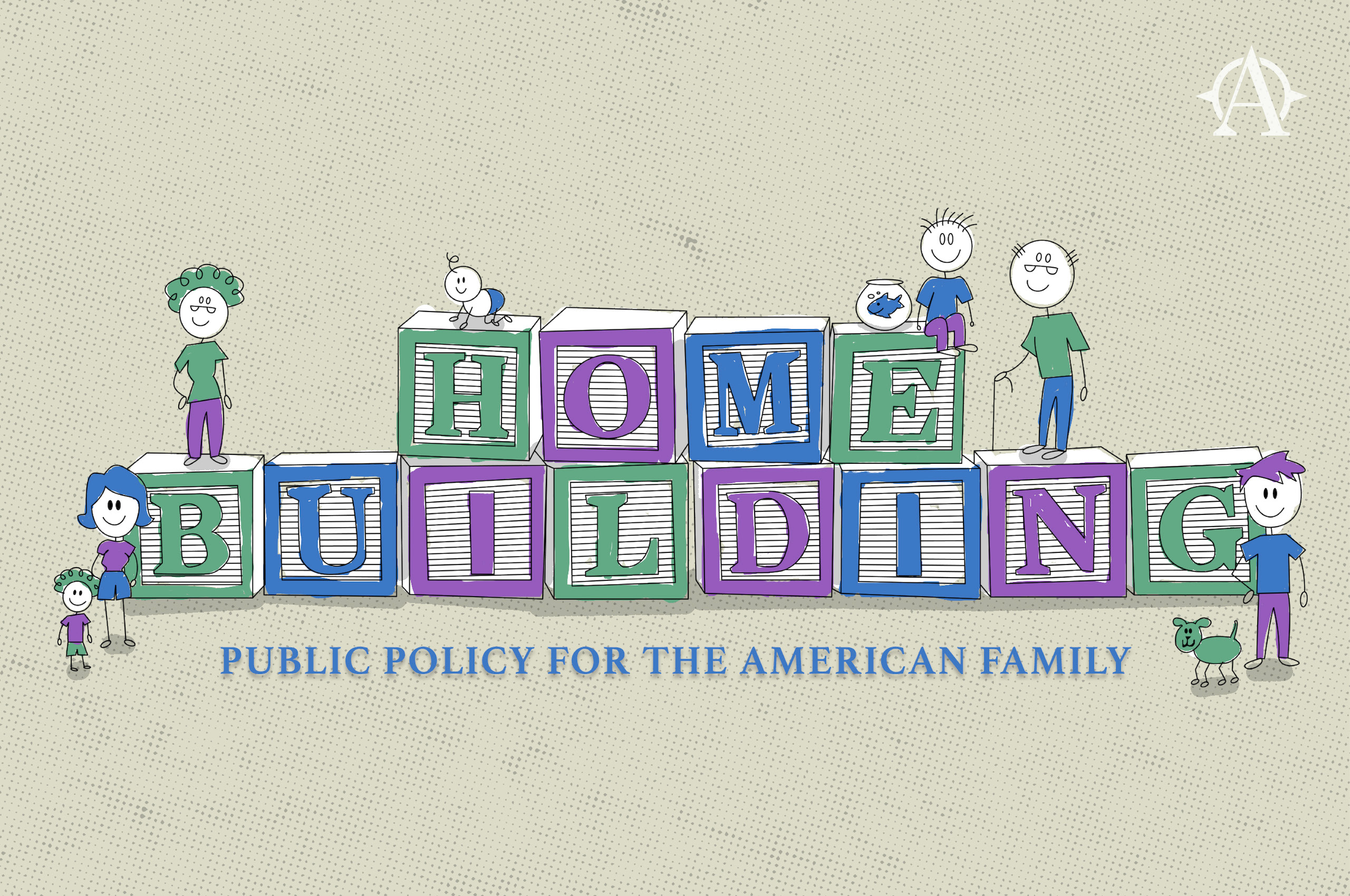

RECOMMENDED READING
Our policy debates center on helping working families, but they routinely fail to capture those families’ preferences for their own lives or for policies that would help them most. Proposals most useful to households with all adults in the workforce, like subsidized childcare or paid leave, often receive far more attention from policymakers and pundits than policies that would benefit households with a stay-at-home parent.
In his essay for our Home Building collection, Michael Lind argues that this dynamic is a feature of the new class war, in which the ideals and material interests of working-class families are at odds with those of higher classes and lead to different policy preferences. The interests of the professional managerial class are then catered to at the expense of the working class.
The American Compass Home Building Survey (see Part I, on family structure, and Part II, on policy preferences) paints this picture starkly. Not only do attitudes and preferences about family structure, paid work, fertility, and policy vary markedly by class, they reveal a striking mirror-image effect as one travels up or down the class ladder.
Our survey asked respondents both how they balanced paid work and childcare prior to the COVID pandemic and how they would ideally balance work and childcare when raising children under the age of 5. For the purposes of public policy, this period of raising young children is especially important: the demands of parenting are most time-intensive and children are not yet ready to enter school.
Looking at the current arrangements of two-parent families by class, two models stand out from the rest: the “breadwinner” model of a full-time earner and a stay-at-home parent versus the “dual-earner” model of two full-time workers. Majorities of lower- and working-class couples adopt the “breadwinner” model and have a full-time stay-at-home parent, whereas most upper-class families (households with income above $150K) have both parents working full-time.
These arrangements align with people’s stated preferences. When asked which arrangement for paid work and childcare they would consider ideal while raising young children, majorities of lower- and working-class couples prefer the breadwinner model, whereas a plurality of upper-class families prefer the dual-earner model.
Class-correlated preferences for paid work and childcare exist regardless of gender.
While most couples seem largely able to achieve their preferred balance of paid work and childcare, across classes roughly half say they have fewer children than they would consider ideal. But ask the reason for unmet fertility and the same pattern emerges: for most couples, the most common barrier to unmet fertility goals is affordability. For upper-class couples, it’s more likely that career and lifestyle preferences come into conflict with fertility goals.
Policy preferences appear to emerge directly from preferences in child-rearing and reasons for unmet fertility. For lower- and working-class couples with young children, who largely prefer a stay-at-home-parent and report financial obstacles to having more children, direct cash assistance is the most popular form of family support. For middle- and upper-class couples, where concerns about career are more prevalent, subsidized childcare is most popular.
It’s not enough to appreciate the degree to which family structures, ideals, and policy preferences are correlated with class. Instead, we should reckon with the extent to which public debates centered around policies that most directly support dual-earner couples—such as subsidized childcare and paid family leave—ignore the realities and ideals of American families most in need of support.
ABOUT THE DATA
The American Compass Home Building Survey was conducted by YouGov between January 21 and January 28, 2021, with a representative sample of 2,000 adults aged 18–50 living in the United States, including 1,174 respondents who reported being a parent or guardian. YouGov interviewed 2,214 respondents who were then matched down to a sample of 2,000 to produce the final dataset. The respondents were matched to a sampling frame on gender, age, race, and education. The frame was constructed by stratified sampling from the 2018 American Community Survey (ACS) 1-year sample subset on those aged 18–50, with selection within strata by weighted sampling with replacements (using the person weights on the public use file).
Respondents were instructed: The ongoing COVID-19 pandemic has placed extraordinary financial, logistical, and emotional constraints on families and forced many to rearrange their lives. In answering these questions, please think how your life would be with no pandemic—for instance, how it was before the pandemic struck or how you expect it to be once the pandemic has ended.
“Class” is defined by education and income:
- “Lower” (N=553): less than a 4-yr degree and household income below $30K
- “Working” (N=385): less than a 4-yr degree and household income $30K–$70K
- “Middle” (N=652): 4-yr degree or more and household income $30K–$70K; or household income $70K–$150K
- “Upper” (N=110): household income above $150K
Respondents who did not report household income and those with a 4-yr degree or more but household income below $30K are excluded from analyses using the “Class” variable.
The policies listed in the “Family Policy Preferences” charts and accompanying commentary are shorthand for the options given to respondents:
- Direct cash assistance = “Direct cash assistance: The government could send money to families for each child living in the household.”
- Wage subsidy = “Wage boost: The government could add to the earnings of low-wage workers with children under 18; like the taxes it usually takes out but in reverse.”
- Subsidized childcare = “Free or discounted childcare: The government could operate daycare centers or help pay the cost of childcare.”
- Baby bonds = “‘Baby bonds’ for children: The government could create savings accounts for children and put money in each year, with the child receiving the total amount upon reaching adulthood.”
- Paid family leave = “Paid family leave: The government could require that employers provide at least three months of paid leave to new mothers and fathers.”
Recommended Reading
New Collection and Exclusive Survey on State of the American Family
PRESS RELEASE—American Compass’s February 2021 collection, Home Building, provides a conservative vision for family policy
Family Policy for the Working-Class Majority
A pro-worker agenda must treat families, not individuals, as the basic units of public policy.
Home Building Survey Part II: Supporting Families
American attitudes about family structure vary widely, but most families see a full-time earner and a stay-at-home parent as the ideal arrangement for raising young children.











